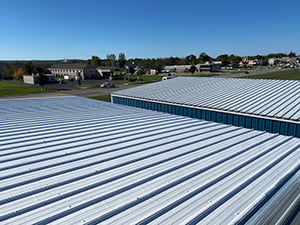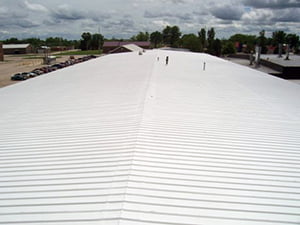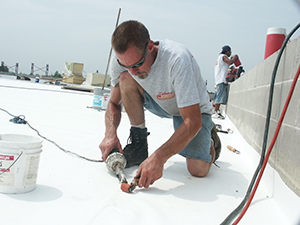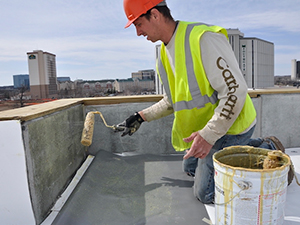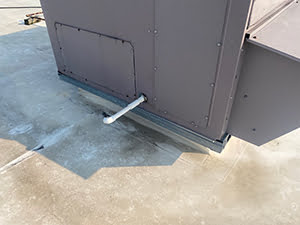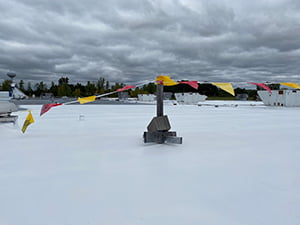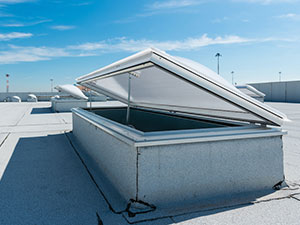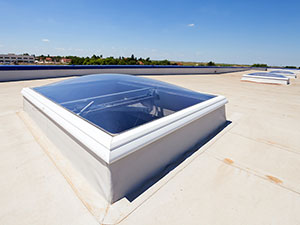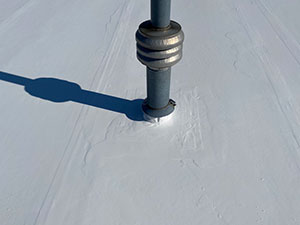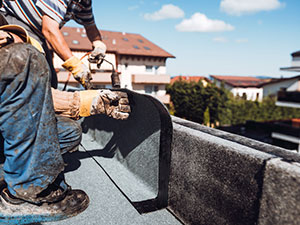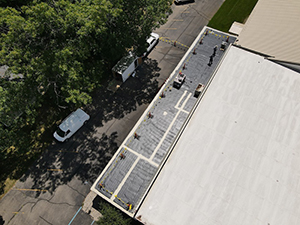
For commercial building owners in Ontario, CA, maintaining a durable and energy-efficient roofing system is essential for protecting assets, minimizing maintenance costs, and preserving structural integrity. One of the most effective ways to enhance the lifespan of a commercial roof without the expense of a full replacement is through acrylic roof coating. This protective solution offers excellent performance, especially for flat or low-slope roofing systems, and can be applied over a range of substrates. If you are looking to improve the weather resistance and energy efficiency of your roof in Ontario, CA, contact Shark Roofing Systems at 213-466-0074 to learn more about acrylic roof coating services.
Process of Acrylic Roof Coating
Preparing the Roof: Cleaning and Surface Evaluation
The first and most crucial phase of the acrylic roof coating process is proper preparation. Before any coating can be applied, the existing roof surface must be thoroughly cleaned and assessed for damage. For commercial roofs, especially those exposed to heavy wear, pollutants, or ponding water, this step ensures that the coating adheres effectively and provides the desired long-term benefits.
Cleaning usually involves pressure washing the roof to remove dirt, mildew, oils, and loose debris. After the cleaning stage, a professional will inspect the surface for cracks, seams, or punctures that need to be sealed. This might include patching damaged areas with fabric reinforcement or elastomeric sealant. Surface preparation is not only necessary for coating performance but also an opportunity to detect hidden issues that could compromise the structure if left unresolved.
A properly prepared surface sets the foundation for long-lasting acrylic coating, providing a clean, stable canvas that maximizes adhesion and performance.
Applying the Coating: Layer by Layer for Lasting Protection
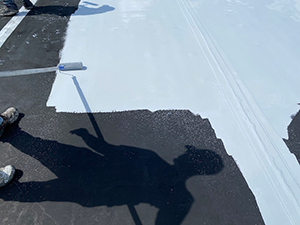
Once the roof has been cleaned and repaired, the acrylic roof coating is applied in multiple stages. Acrylic coatings are water-based and typically installed using spray equipment or rollers, depending on the size and complexity of the roof. Most applications involve two to three coats to ensure full coverage and durability.
The first coat acts as a base layer, bonding tightly with the roof and sealing minor imperfections. The second and third coats build on this foundation to form a seamless, monolithic barrier that reflects UV rays, resists water infiltration, and adds flexibility to accommodate thermal expansion and contraction. In commercial environments where the roof is subjected to extreme temperatures and constant exposure, this flexibility is crucial for maintaining structural integrity over time.
Drying time between coats varies depending on weather conditions, but professionals usually allow 8–24 hours for curing before applying subsequent layers. When applied correctly, the acrylic coating forms a highly reflective white surface that not only protects the roof membrane but also reduces heat absorption — a critical advantage for businesses looking to cut cooling costs in warm climates like Ontario, CA.
Final Inspection and Long-Term Benefits
The last stage of the process involves a detailed inspection to ensure that the acrylic coating has been applied uniformly and has properly sealed all seams, fasteners, and flashing components. Any touch-ups are completed at this stage, and documentation is often provided for warranty and maintenance records.
Once the coating has cured completely, building owners can begin reaping the benefits almost immediately. Acrylic roof coatings offer strong resistance against UV degradation, ponding water (when paired with proper drainage), and mild foot traffic. Perhaps most importantly, they can significantly extend the life of the existing roof system by 10 to 15 years or more when properly maintained.
The energy-efficient properties of acrylic coatings are also well-documented. Their high solar reflectance helps keep roof temperatures lower, reducing the demand for HVAC systems and leading to lower energy bills. For commercial properties, this can result in thousands of dollars in operational savings over time.
Additionally, since acrylic coatings are considered a sustainable roofing solution, many projects may qualify for energy rebates or tax incentives — a bonus for environmentally conscious business owners in Ontario, CA.
Acrylic Roof Coating Professionals
If your commercial roof in Ontario, CA is showing signs of aging — such as fading, cracking, or minor leaks — do not jump to a full roof replacement just yet. An acrylic roof coating could be the cost-effective solution that restores performance, enhances durability, and adds energy efficiency to your building. Not only is this process less disruptive than traditional replacement methods, but it also extends the life of your existing roof while offering long-term savings.
For professional acrylic roof coating services in Ontario, CA, reach out to Shark Roofing Systems at 213-466-0074. A simple inspection today could prevent expensive repairs tomorrow and provide lasting protection for your commercial investment.
FAQ
What types of roofs can be coated with acrylic?
Acrylic coatings are compatible with various commercial roof substrates, including metal, modified bitumen, single-ply membranes, and built-up roofing.
How long does acrylic roof coating last?
When applied and maintained correctly, acrylic roof coatings can last between 10 to 15 years. Periodic maintenance can extend this lifespan even further.
Can acrylic coatings stop roof leaks?
Yes, they can seal small cracks and leaks. However, significant damage should be repaired prior to application for the best results.
Is the application process disruptive to building operations?
No, the process is minimally invasive, especially compared to full roof replacement. Most buildings can continue operations during the coating process.
How soon can I walk on the coated roof?
Light foot traffic is usually possible 24–48 hours after the final coat is applied, but it depends on weather and manufacturer recommendations.
Does acrylic coating improve energy efficiency?
Absolutely. Acrylic roof coatings reflect sunlight, reduce heat absorption, and help lower cooling costs — especially valuable in warm climates like Ontario, CA.


